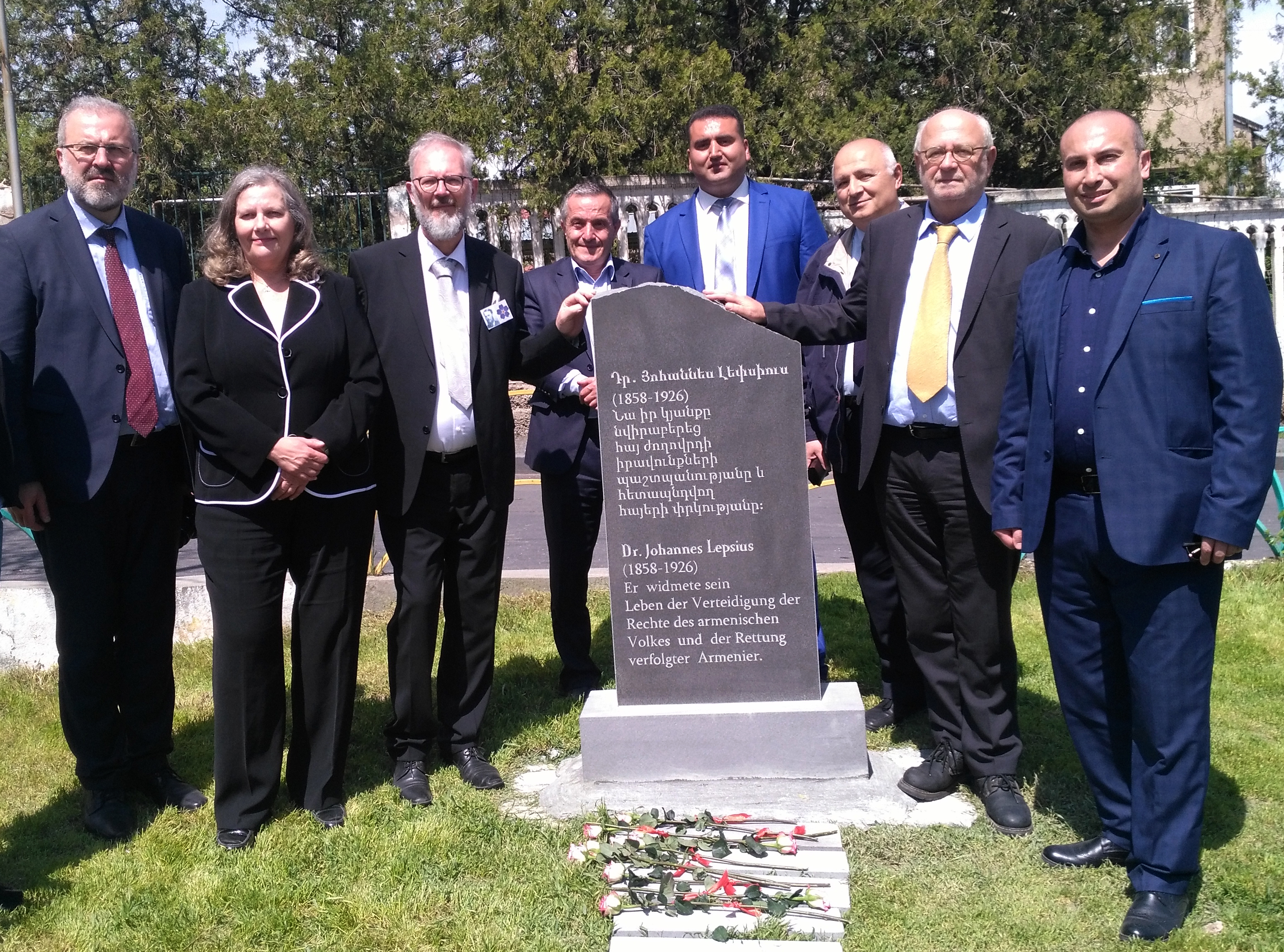
On May 6, a park after German Armenophil Johannes Lepsius was opened in Yerevan, Zeytun district. The opening ceremony was attended by the director of “Armenian Genocide Museum-Institute” Foundation Harutyun Marutyan, Ambassador Extraordinary and Plenipotentiary of the Federal Republic of Germany to Armenia Bernhard Matthias Kiesler, the director of Lepsiushaus, Lepsius House-Museum in Potsdam, Rolf Hosfeld, Johannes Lepsius’ grandson Manfred Ashek and his wife, representatives of Yerevan Municipality and others.
A monument was also placed in the park in memory of the great Armenophil and humanist Johannes Lepsius:
“He dedicated his life to the protection of Armenian people’s rights and to the salvation of the persecuted Armenians”.
Who was Lepsius and why the Armenian people remember him with gratitude?
In summer 1914 the “German–Armenian Society” NGO was created by German public figure, orientalist and a great Armenophil, Doctor of Theology Johannes Lepsius.
Dealing with the Armenian issue for many years Johannes Lepsius collected means to establish orphanages, schools, hospitals and industrial enterprises for the Armenian population in Asia Minor and the Armenian refugees in different countries. The activity of the “German-Armenian Society” is connected with the name of Johannes Lepsius, who was the chairman of this association until he passed away.
In June 1914 the first meeting of this association was held in Berlin where the chairman Johannes Lepsius together with his deputies Paul Rohrbach and James Greenfield, as well as assistants E. Shtir and A. Isahakyan discussed the mission of the association.
A year after the establishment of the association, when the authorities of the Ottoman Empire started carrying out the massacres and deportations, Johannes Lepsuis moved to Constantinople and asked Enver Pasha to stop immediately the mass massacres of the Armenians, but he was refused. Going back to Berlin, during the meeting of “German-Armenian Society” on October 9, 1915, Lepsius gave a report about the genocide and deportation of eastern Armenians. Participants of the meeting sent a letter to German Chancellor asking him to prevent the atrocities against the Armenians. But the request went unanswered and the German government did nothing. On April 22, 1918, the association sent a request to the Reichstag asking to undertake necessary means to end the Armenian Genocide. This request was not addressed either.
In this situation nothing was left to do for Lepsuis and his retainers except to organize the care of the Armenian women and children who survived the Armenian Genocide. In one of his reports Lepsius said:
“Currently, about 2,700 children are gathered in our main working field only who opened their mouths to get bread without which they will starve to death. …Our purpose is to rescue as many survivors, particularly children, as possible”.
Moreover, Lepsius did not spare any effort to present the accurate picture of the situation in the Ottoman Empire to the German society. The German press was under strict censorship and only pro-Turkish articles far away from reality were published. Therefore Lepsius made a brave step; to collect all information at hand and publish them in one book.
In extremely confidential conditions and overcoming many obstacles, the association had published collections of documents, which depict the great tragedy of the Armenians; “Germany and Armenia 1914-1918” in 1919, “The Extermination of the Armenian Nation” in 1919. The collections strip the fact of the Armenian Genocide which was planned, organized and applied by the Young Turks.
In 1919, Lepsius published the book “The death of the Armenian Nation”, and as a result was exiled to a neutral country; the Netherlands.
It should also be noted, that despite the pro-Armenian policy and humanitarian activities of German-Armenian Society, during World War I, under the German-Turkish alliance conditions, the association was not exempted from political propaganda, however it had great investment in rescuing the Armenian splinters from impending death and making their livings.
The Armenians will always be grateful to the great humanitarian for his pro-Armenian activities. Soil brought from his grave is buried in the left side of Armenian Genocide Memorial Wall of the central alley of AGMI. In 2008, the Armenian Genocide Museum-Institute organized an international conference dedicated to the 150th Anniversary of Johannes Lepsius and issued a nominal postcard. In 2013, within the framework of centennial events of the Armenian Genocide, “Haypost” has issued "Johannes Lepsius” stamps.





